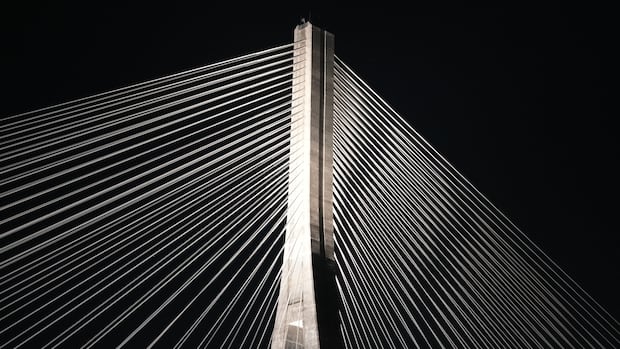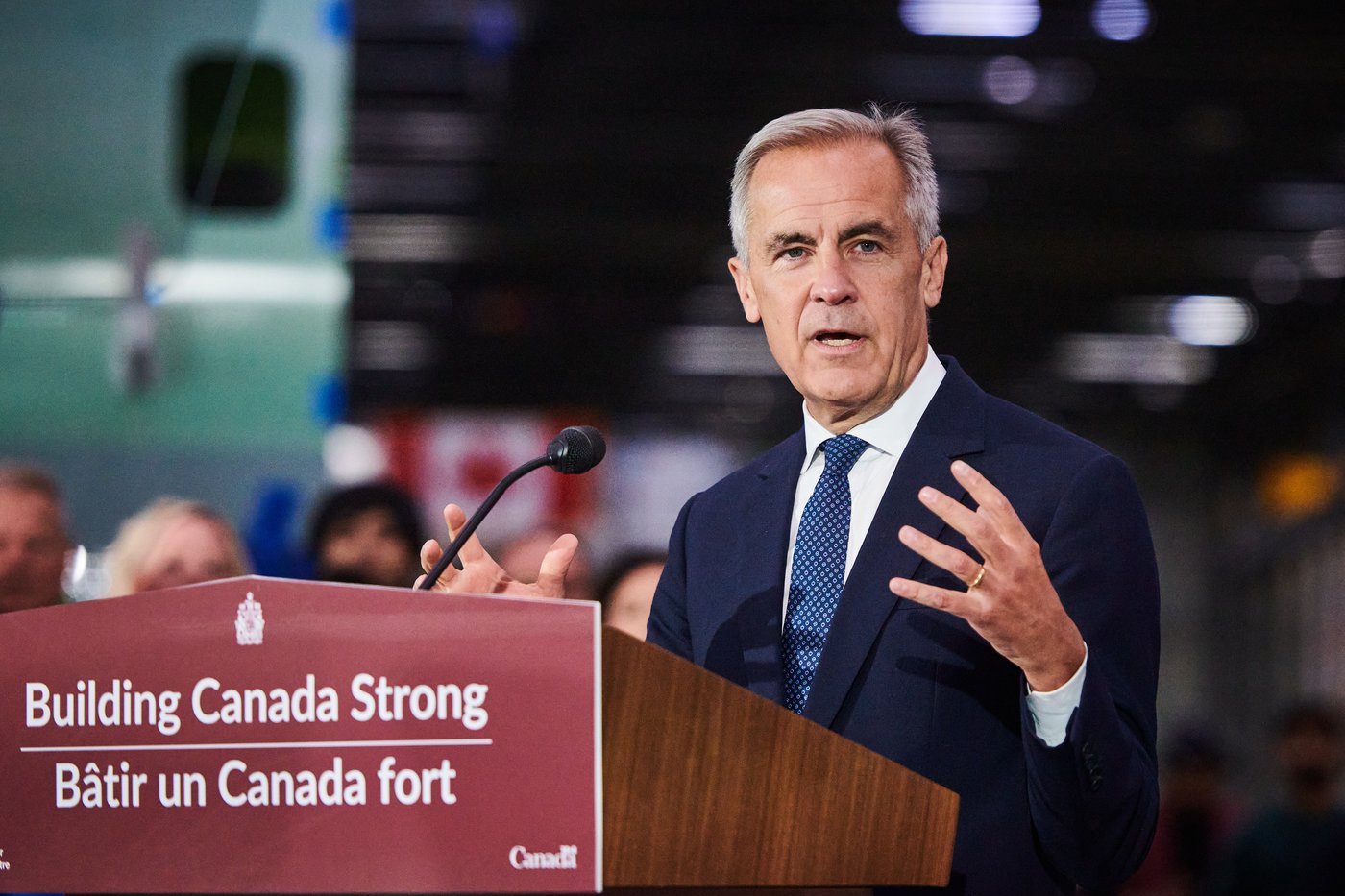New bridge between New Brunswick and Maine may not revive battered cross-border bonds
Every day, a handful of curious Edmundston retirees gather near the Canada Border Services Agency building on the St. John River.
They’ve been watching with fascination as a new international bridge has taken shape over the last three years.
Now that the bridge is finished and open — mostly — they’re waiting to see the old bridge, opened in 1921, dismantled this summer.
The project has been the talk of this northwest New Brunswick city and of the American town of Madawaska, Maine, across the river — two communities that have shared a bond for almost two and a half centuries.
“It’s pretty much my whole life. I spent my life spanning the bridge,” says Don Levesque, an American and the retired publisher of a weekly newspaper on the U.S. side who lives in Edmundston.
Locals on both sides tell stories of frequent trips across the border to shop, to go to movies, to play baseball or basketball, or to visit relatives or go on dates.
“I remember crossing the old bridge on my bike with three T-shirts and a couple of coats, because we were smuggling,” says Nicole Lang, a retired professor of history at the Université de Moncton campus in Edmundston.
A new span linking Edmundston, N.B. and Madawaska, Maine, may not be enough to revive frayed border links.
Concealing a few purchases from the U.S. side was common practice for Canadians looking to avoid paying duty — and they usually got away with it.
“We stopped at the customs, but they saw us on bikes and [said] ‘You go ahead,'” says Lang. “And we didn’t need a passport back then.”
Between 2,200 and 2,500 cars per day used the old bridge to cross the border here in the years before COVID-19 shutdowns, according to both the Maine and New Brunswick governments.
But the old steel-truss bridge was deteriorating. In 2017 the two governments imposed weight restrictions that forced trucks to detour to other international bridges 25 minutes upriver or 35 minutes downriver.
The new bridge cost about $135-million Cdn and features two lanes for vehicle traffic and room for ATVs and snowmobiles.
A U.S. federal infrastructure fund covered a large portion of the expense, with the Maine and New Brunswick governments splitting the rest.
New Brunswick’s share was about $35 million, according to spokesperson Bruce Macfarlane.

The bridge opened to car traffic June 6, with an official ceremony planned for August.
Truckers will have to wait a while longer to cross it. The old bridge has to be partly dismantled where it reaches the Canadian shore before the new bridge lane leading to the customs checkpoint can be widened for trucks.
At the U.S. end of the bridge is a sculpture of a large yellow star — a tribute to the shared francophone Acadian roots of the two communities.
The star and new bridge are modern manifestations of links dating back to 1785, when Acadian settlers who lived in what’s now Fredericton moved upriver in the wake of the Deportation and the arrival of Loyalists fleeing the American Revolution.
The settlement was a single community, living in peaceful, jurisdictional ambiguity until a geopolitical rivalry over access to timber almost led to a war between Great Britain and the U.S.
The British wanted the line drawn south of here, allowing them access to more of the white pine used to build ships.
The U.S. wanted it farther north, near the St. Lawrence River, in part to be closer to the waterway in the event of a military conflict.
A compromise struck in 1842 split the difference, with a treaty drawing the border down the middle of the St. John River.
“In effect it divided up one homogeneous population into two countries and two languages and two different systems of government,” says Lise Pelletier, the New Brunswick-born former director of the Acadian Archives at the University of Maine at Fort Kent.
Despite the border, the relationship between the two newly created towns remained “really fluid” for a century and a half.
“When I was a teenager during in the 1970s, we crossed by bike, by car, and we stopped at the border, of course,” Pelletier says. “And they used to ask a few questions, but it was not really strict. It was a border, but not very hard to cross.”
The Sept. 11, 2001, attacks changed that, leading to the creation of the U.S. Department of Homeland Security and a more rigid American approach to enforcing the boundary.
That has meant longer delays and more intrusive searches, to the point that some Edmundston residents cross less frequently now, if they go at all.
“It’s an obstacle. It’s a barrier. It’s not a pleasant thing like it was in the past,” says Lang. “Some still do cross and some cross daily. Some people go get their milk on the American side. Some people will go get their gas on the American side.
“But people like me who crossed occasionally, once every two weeks, 2-3 times a month, I have a tendency now to go less and less.”

The tougher security regime in the U.S. also explains the odd configuration of the new bridge, which crosses the river diagonally and, at 570 metres, is approximately twice as long as the old span.
New post-Sept. 11 security regulations in the U.S. require any new Customs and Border Patrol building to meet strict size and capacity standards.
That would have been too large for the tiny footprint at the American end of the old bridge, tucked between the river and the Twin Rivers Paper Company’s massive U.S. mill complex.
So the building had to go elsewhere — and thus so did the bridge.
The old U.S. Customs building is now abandoned, resembling a dystopian relic. The old bridge is closed to traffic, blocked off by large barriers.

Whether the new bridge breathes new life into the cross-border relationship remains to be seen.
“I do hope that people will continue to cross from Maine into New Brunswick and vice versa, because we’re border communities,” says Pelletier.
Pelletier, who was born in New Brunswick but married an American, has worked for decades promoting the Franco-American culture on the U.S. side.
Now, as a Maine resident, she crosses into Canada frequently to teach French as a second language to people who have recently moved to the Lac Baker area of New Brunswick.
“We live in a borderland. We depend enormously on each other,” she says.
Lang hasn’t crossed to Maine since before the COVID-19 pandemic, but, she says, she will probably do so soon.
“I want to cross the new bridge,” she says. “I think it’s part of our history now, so I will see how it goes.”




